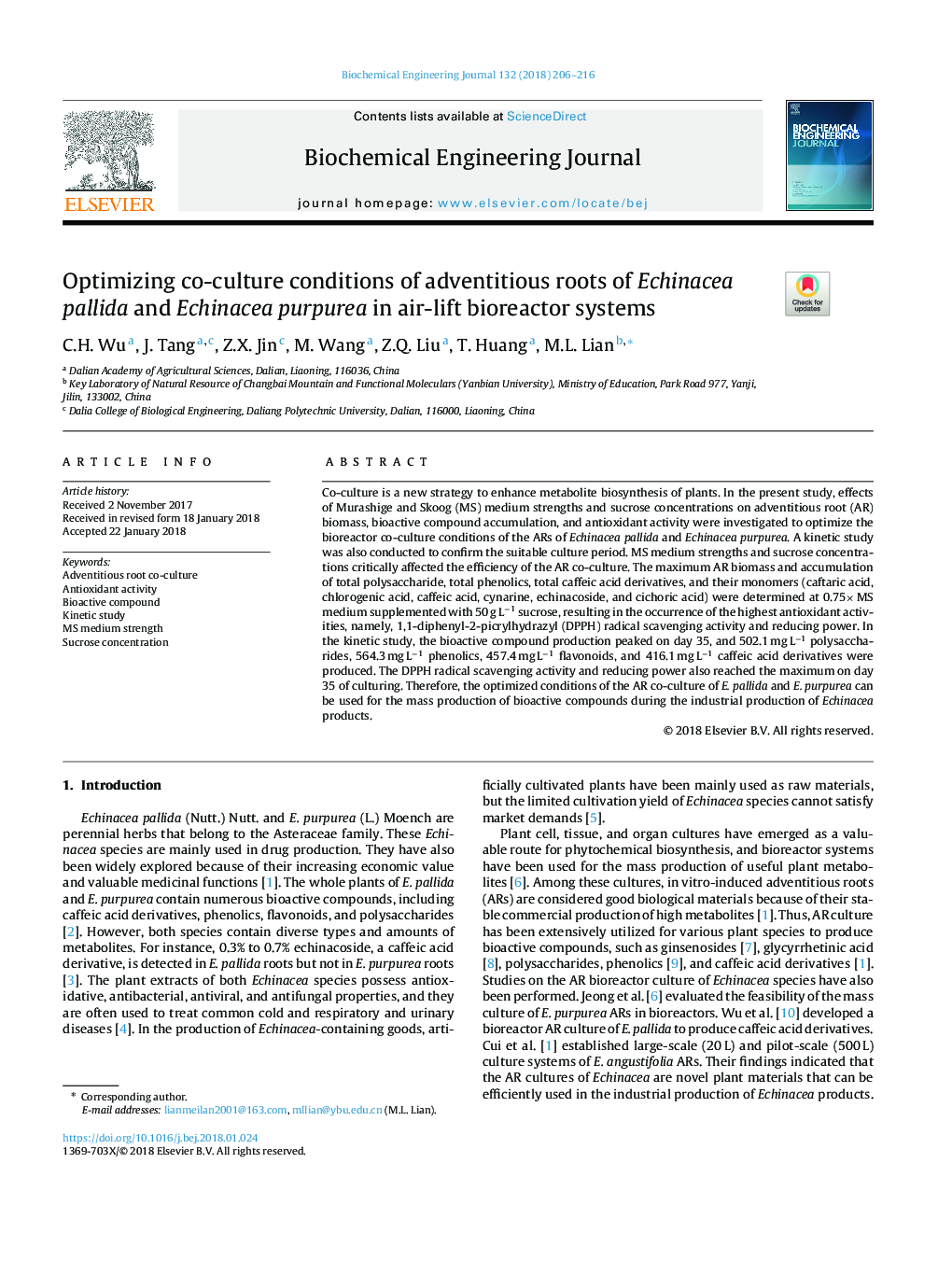| Article ID | Journal | Published Year | Pages | File Type |
|---|---|---|---|---|
| 6482267 | Biochemical Engineering Journal | 2018 | 11 Pages |
Abstract
Co-culture is a new strategy to enhance metabolite biosynthesis of plants. In the present study, effects of Murashige and Skoog (MS) medium strengths and sucrose concentrations on adventitious root (AR) biomass, bioactive compound accumulation, and antioxidant activity were investigated to optimize the bioreactor co-culture conditions of the ARs of Echinacea pallida and Echinacea purpurea. A kinetic study was also conducted to confirm the suitable culture period. MS medium strengths and sucrose concentrations critically affected the efficiency of the AR co-culture. The maximum AR biomass and accumulation of total polysaccharide, total phenolics, total caffeic acid derivatives, and their monomers (caftaric acid, chlorogenic acid, caffeic acid, cynarine, echinacoside, and cichoric acid) were determined at 0.75ÃâMS medium supplemented with 50â¯gâ¯Lâ1 sucrose, resulting in the occurrence of the highest antioxidant activities, namely, 1,1-diphenyl-2-picrylhydrazyl (DPPH) radical scavenging activity and reducing power. In the kinetic study, the bioactive compound production peaked on day 35, and 502.1â¯mgâ¯Lâ1 polysaccharides, 564.3â¯mgâ¯Lâ1 phenolics, 457.4â¯mgâ¯Lâ1 flavonoids, and 416.1â¯mgâ¯Lâ1 caffeic acid derivatives were produced. The DPPH radical scavenging activity and reducing power also reached the maximum on day 35 of culturing. Therefore, the optimized conditions of the AR co-culture of E. pallida and E. purpurea can be used for the mass production of bioactive compounds during the industrial production of Echinacea products.
Related Topics
Physical Sciences and Engineering
Chemical Engineering
Bioengineering
Authors
C.H. Wu, J. Tang, Z.X. Jin, M. Wang, Z.Q. Liu, T. Huang, M.L. Lian,
